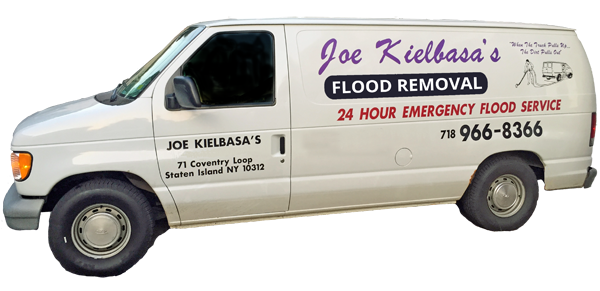Why choose Joe Kielbasa’s Flood Service for Mold Removal?
- 24/7 service – call us and you will always talk to the owner immediately
- At your door within an hour
- Direct insurance billing
- Personalized service from beginning to end
- Small, family owned company that treats you like one of our own
- Free estimates
- We accept cash, credit and checks

24/7 Mold Removal & Remediation
Mold problems can range from a musty odor or a little discoloration to triggering allergies and on to some very serious health hazards for those with asthma or immune disorders. And it also damages building materials.
Due to these hazards the EPA (Environmental Protection Agency) strongly discourages homeowners from treating areas larger than about 10 square feet (3 by 3 feet) themselves. It’s also important to keep in mind that mold doesn’t need light (it’s not a plant — it’s a fungus), only moisture. It lives by “eating” your home! And the bulk of the problem can be completely hidden.
Do it yourself methods such as bleach and paint (even primer/sealer/stain blocker) are rarely enough to actually kill the fungus, and you risk spreading mold spores (spores are microscopic “seeds” that quite easily float in the air) throughout your home. Not to mention health hazards to yourself.
Given sufficient moisture and reasonable temperatures mold can harm just about any porous material such as paper, ceiling tiles, drywall, wood, carpet and fabrics… and even hard surfaces where moisture gathers such as in an air conditioning system. It’s often hiding behind wallpaper or paneling, inside the wall itself, under carpets, and above ceilings. And of course damp basements, where it can spread throughout the building when conditions are right.
Mold remediation involves a number of very specific procedures to safely and completely resolve the problem. Improper action, such as simply peeling off moldy wallpaper, can make matters worse by spreading spores.
Mold Remediation and Removal: What's the Difference?
“Mold removal” refers specifically to removing moldy materials from the building. “Mold remediation” covers the entire process, including mold removal. It starts with testing and assessment and covers everything all the way to properly disposal of contaminated materials.
For the highest in ethics, testing and remediation should be done by separate companies so that there’s no conflicts of interest in establishing the need for potentially expensive services.
Once that’s taken care of there are several key steps to the process.
1. Containment
2. Removal of all affected porous materials
3. Cleaning and disinfecting of all remaining materials
4. Correct the source of excess moisture or humidity
5. Apply sealant
6. Properly dispose of all contaminated materials
It may seem strange that getting everything dry isn’t the first step, but molds only release their spores when dry.
Containment, that is preventing spores and toxins from spreading, is actually one of the most challenging aspects of mold removal & remediation.
Depending on the size of the affected area it may involve hanging plastic sheeting, or go so far as temporary framing together with plastic sheeting, negative pressure exhaust, and air locks. Since they’ll be close to loosened mold for a prolonged time,
Why All the Fuss?
Many people ask us if mold is really such a big deal. After all, it wasn’t an issue for our grandparents and before. Well, there’s two reasons. First, homes designed and built in the 1970s and on through the 1990s were often built too “tight,” letting in very little cold winter air or hot summer air. So indoor humidity was often too high and mold became a much more common problem. Second, medicine has become much more aware of health problems associated with mold, such as allergies as well as potentially very serious effect of myco-(fungal-)toxins have on many individuals after prolonged exposure.
So. In brief, if you see anything more than a few spots on the grout between bathroom or kitchen tile, start noticing musty odors, or members of your family are experiencing allergies or flu-like symptoms more often, then it’s time to call in a professional.

